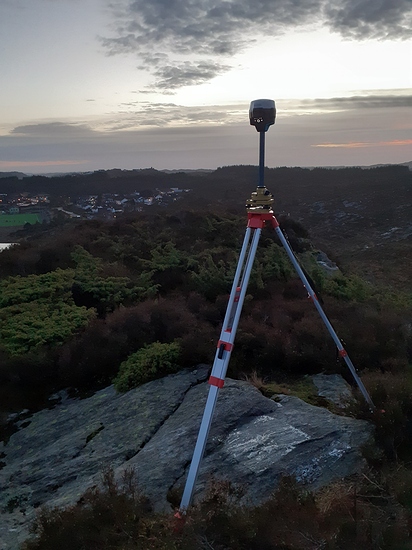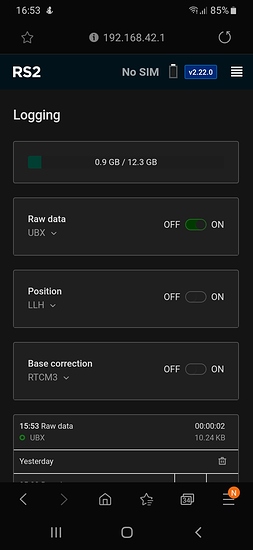Thought i would share PPP session i did some time ago. This shows you what accuracy can be achieved with a simple receiver and a little patience.
The method is excellent where distance to base is too long or missing services like internet and reference stations
Gear used:
1x RS2
1x tripod (recommended for static survey and/or long period of time. Its steady and durable)
1x extension pole (optional)
1x tribrach (highly recommended to keep the reciver level and for targeting the ground point)
Software:
Reachview firmware 2.22
RTKlib Emlid 2.43.b33
Nrcan CSRS PPP tool
Local transformation tool SKtrans
Windows Paint
Goal:
-Compare logged data with known accurate official benchmark
-initial thoughts around processed data, observation time and deviation
Distance from mark on the ground to ARP was 1754mm
After aligning the unit above the mark, the unit was booted up and started recording observation from all satellite systems at 1Hz. Raw format
Observation time 2 hours and 35minutes. Based on specification for the RS2 and Nrcan service, this should give me good horizontal accuracy. For good measure and redundancy a long enough observation time is needed to obtain a new complete set of satellites in your records to eliminate satellite error. Depending on the accuracy requirements.
Benchmark data:
Coordinates in EUREF89 UTM32. Height is in a local datum (NN2000).
Last updated in 2018 with minor mm adjustments. It looks like its due for a new adjustment. Few mm in a direction but for this purpose its more then good enough.
The date of observation was January 22, 2020. For the Final solution from NRcan, it takes 2-3 week. Rapid solution is less accurate but available few hours after collected epoch.
I use RTKlib to process the raw file and turn it into a Rinex (3.03) format before submitting it to the CSRS service. Antenna height was added to the Rinex.
Few minutes later i receive an email with a processed PPP file.
raw_202001221553 (6).pdf (1.1 MB)
and the estimates
I used ITRF14 and copy the XYZ coordinates into my local tranformation tool SKtrans. This will give me coordinates in EUREF89 UTM32
Now, comparing the known coordinates with processed, i get this
North delta Δ = -0,1mm
East delta Δ= -5mm
Elevation delta Δ= -46mm
Not shabby at all.
Taking a closer look at the elevation offset and keeping in mind that the height accuracy is always 2 times the horizontal accuracy and the fact that there is only satellites from one side (because the earth is in between) compared to a horizontal position.
If you look at the skyview, this session “only” tracked 4 satellites in this timeframe.
To get better elevation accuracy, i need more satellites above me or longer observation time from the ones i got.
I might run this test later in either a timeframe where i know more satellites is above or just use a longer observation.
I hope this low tech hobby presentation was worth your time reading















